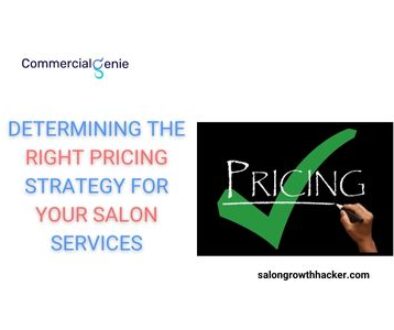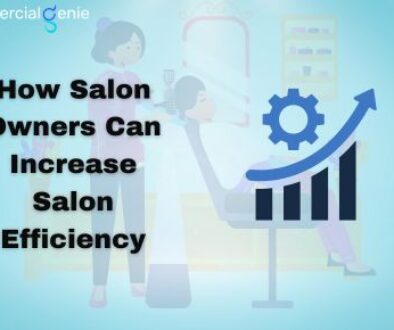Enhancing Salon Experiences: How to Create an Effective Customer Feedback Form
Introduction
Welcome to the salon industry, where customer satisfaction is the cornerstone of success. To ensure your salon is consistently meeting and exceeding client expectations, it is crucial to have a streamlined feedback system in place. In this blog post, we will delve into the importance of a customer feedback form and guide you through the process of creating an effective one. By implementing a well-designed feedback form, you can gather valuable insights, enhance customer experiences, and boost your salon’s reputation.
Understanding the Significance of a Customer Feedback Form
In the digital age, customers have more power than ever before. They can share their experiences and opinions about your salon through various platforms like social media, salon forums, and review websites. By proactively collecting feedback through a customer feedback form, you empower yourself to address issues promptly, identify areas for improvement, and provide exceptional services.
for salon related software contact us.
Types of Feedback Questions
When creating a customer feedback form for your salon, it’s important to consider the types of questions you ask. By incorporating a variety of question types, you can gather more nuanced feedback and gain deeper insights into your customers’ experiences. Here are a few types of feedback questions to consider:
Multiple-Choice Questions:
Multiple-choice questions offer predefined response options and are particularly useful for gathering quantitative data. For example, you can ask customers to rate the cleanliness of the salon on a scale of 1 to 5 or choose from a set of options to describe their overall satisfaction with the hairstyling service. These questions provide structured feedback that is easy to analyze and compare across different respondents.
Rating Scales:
Rating scales allow customers to rate various aspects of their salon experience on a numerical scale. These scales can range from 1 to 10 or use descriptive terms like “poor” to “excellent.” You can use rating scales to evaluate specific services, such as the quality of the hair color or the professionalism of the staff. They provide a quantitative measurement of satisfaction and help identify areas that require improvement.
Open-Ended Questions:
Open-ended questions provide customers with the opportunity to provide detailed and qualitative feedback. These questions allow respondents to express their thoughts, suggestions, and any issues they may have encountered during their salon visit. For example, you can ask, “Is there anything specific we could improve to enhance your salon experience?” or “Please share any additional comments or suggestions you have for us.” Open-ended questions provide valuable insights into individual experiences and can uncover specific areas for improvement.
Likert Scale Questions:
Likert scale questions present a statement or statement fragment, and customers are asked to indicate their level of agreement or disagreement on a scale. This type of question measures attitudes, opinions, and perceptions. For example, you can ask customers to rate their agreement with statements like “The salon staff was friendly and helpful” or “The salon atmosphere was inviting and comfortable.” Likert scale questions provide a more nuanced understanding of customer sentiments.
Demographic Questions:
In addition to gathering feedback on the salon experience, consider including demographic questions to capture relevant customer information. These questions can include age, gender, occupation, and frequency of salon visits. Demographic data can help you segment feedback and identify patterns and preferences among different customer groups.
By incorporating a mix of these question types in your customer feedback form, you can gather comprehensive data that offers valuable insights into the strengths and areas for improvement in your salon. It enables you to make data-driven decisions and implement targeted strategies to enhance customer satisfaction and drive business growth.
Key Elements of a Customer Feedback Form :
To create an effective customer feedback form, it is crucial to include specific elements that encourage honest and comprehensive responses. Let’s explore the key components that should be incorporated:
Introduction and Purpose:
Begin the form with a brief introduction, expressing your appreciation for the client’s visit and their willingness to provide feedback. Clearly state the purpose of the form, which is to enhance the salon experience and ensure customer satisfaction.
Rating and Ranking:
Include a section where customers can rate their overall experience on a numerical scale or rank it from excellent to poor. This provides an initial snapshot of satisfaction levels and helps you gauge overall customer sentiment.
Specific Service Evaluation:
Devote sections to evaluate different aspects of the salon experience, such as haircuts, hair styling, color treatments, customer service, cleanliness, ambiance, and any other relevant services your salon offers. Utilize a combination of multiple-choice questions, rating scales, and open-ended questions to gather comprehensive feedback.
Staff Evaluation:
Dedicate a section to evaluate the performance of individual staff members. This can include questions about professionalism, knowledge, communication, and whether the client would recommend the stylist.
Suggestions and Comments:
Allocate space for customers to provide suggestions, comments, or any additional feedback they may have. Encourage them to be specific and offer actionable recommendations for improvement.
Examples of Well-Designed Customer Feedback Forms (approx. 600 words):
To help you visualize the concepts discussed, let’s explore two examples of well-designed customer feedback forms used by successful salons:
Example 1: Simple and Concise Form
This feedback form utilizes a clean and minimalistic design. It begins with a warm greeting and a concise explanation of the form’s purpose. The rating and ranking section follows, allowing customers to express their overall satisfaction. The form then progresses to evaluate specific services, staff performance, and ends with an open-ended comment section. The questions are clear and straightforward, making it easy for clients to provide their feedback efficiently.
Example 2: Comprehensive and Interactive Form
This feedback form takes a more comprehensive approach by incorporating interactive elements. It starts with an interactive rating scale where clients can slide the cursor to rate their experience. The form then uses a combination of multiple-choice questions, checkboxes, and text fields to gather detailed feedback on various services and staff members. This dynamic format enhances customer engagement and encourages thoughtful responses.
Conclusion
Creating a customer feedback form is an essential step in building a successful salon that consistently meets and exceeds client expectations. By incorporating the key elements discussed and drawing inspiration from the examples provided, you can design a feedback form tailored to your salon’s unique needs. Remember to regularly review and analyze the feedback received, taking necessary actions to improve your salon’s services and customer experiences. Embrace customer feedback as an opportunity for growth and refinement, and watch your salon thrive in today’s competitive landscape.
By actively seeking customer feedback, you demonstrate your commitment to providing exceptional services, foster a positive salon reputation, and cultivate long-lasting relationships with your client.





